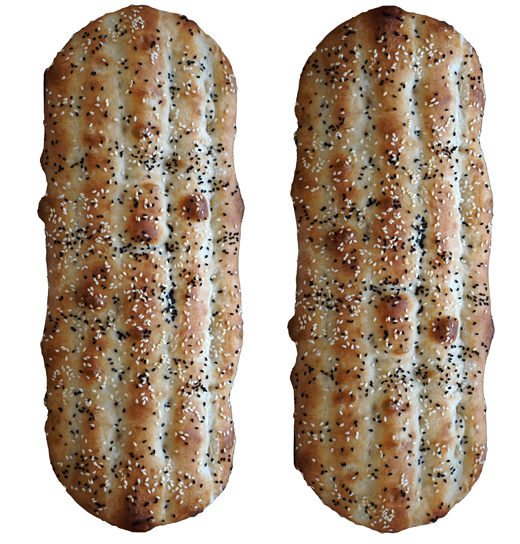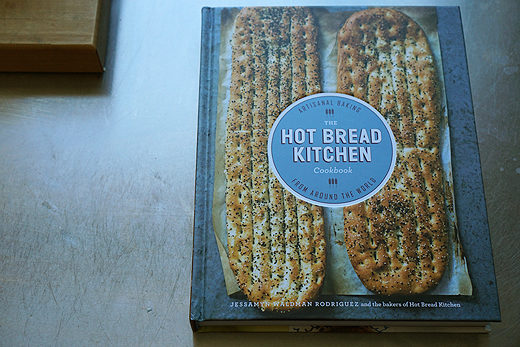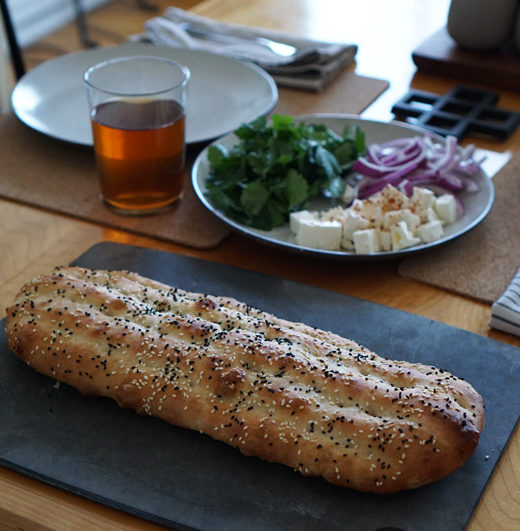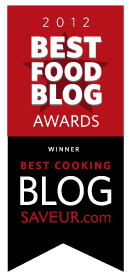
Chicago has something called the Jean Banchet Awards, which are described on their website as “the only Chicago-based award ceremony recognizing culinary distinction in the Chicagoland area”. That is all you really need to know about the awards for our purposes, other than the fact that they recently added a category called “Best Ethnic Restaurant”. I looked to see if I could find a description of what the organization thinks an “ethnic restaurant” is, but I couldn’t find anything. I guess it goes without saying. It is particularly confusing because restaurants like Momotaro (Japanese), The Radler (German), Osteria Langhe (Italian) are not nominated in the “ethnic restaurant” category but rather in the “best restaurant” category. If they are not “ethnic restaurants” then “ethnic” must be code for something else.
Ugh.
This struck me because recently I have been cooking a lot of ethnic food at home—just kidding, I have been cooking a lot of Chinese, Lebanese, and Mexican food. (see how I was specific there?) And I always feel a little self-conscious when I share those recipes with you—I am not an expert and don’t want to mistakenly present myself as one. (We currently are experiencing a cultural moment when legions of anglos consider themselves experts on Middle Eastern food because they own an Ottolenghi book. Guess what, you didn’t discover za’atar, Becky.) I think food can be a great way to learn about cultures other than your own, but only if you put in the work.
I guess what I am saying is that I wish more people felt self-conscious before they opened their mouths, or invented awards.

My recent kitchen projects have been inspired by some cookbooks I received as gifts over the holidays. One of my favorites was The Hot Bread Kitchen Cookbook, it is sort of like the Epcot Center of bread cookbooks. The subtitle is Artisan Baking from Around the World! (I’m not sure if there is actually an exclamation point, but it feels right). It contains recipes for everything from injera to parker house rolls which could be a real disaster but somehow works here. It is also a book about the organization’s mission. Hot Bread Kitchen is a bakery in New York “that employs and empowers immigrant women, providing them with the skills to succeed in the culinary industry.” (got that from the publisher, here) The cover image is of two loaves of Nan-e barbari, which I learned is a Persian flatbread. Flat-ish bread? It is from a chapter called “Slightly Elevated” that covers leavened flatbreads. I suspect my barbari had a bit too much rise, I think it is supposed to be flatter. But it was delicious nonetheless, and made for a nice lunch with a platter of onions, parsley and feta.

Nan-e barbari (from The Hot Bread Kitchen Cookbook)
- 2 cups/450 g lukewarm water
- 2 1/4 teaspoons active dry yeast
- 4 cups/510g bread flour, plus more for shaping
- 2 teaspoons kosher salt
- canola oil
- 2 teaspoons all-purpose flour
- 1/2 teaspoon sugar
- 1/3 cup/80g cool water
- 1 teaspoon nigella seeds
- 1 teaspoon sesame seeds
Stir together the water and yeast in a stand mixer fitted with the dough hook.
Add the bread flour and salt and mix on low speed until the flour is integrated. Increase the speed to medium-high and mix until the dough is elastic, about 6 minutes. The dough should be cleaning the sides of the bowl. Coat the inside of a large bowl with canola oil and transfer the dough to it. Cover the bowl with plastic wrap and let rest at room temperature until the dough is supple and holds an indentation when pressed lightly, about 1 hour.
Turn the dough onto a lightly floured work surface. Divide the dough in half, Gently form each piece into a log. Loosely cover the pieces of dough with plastic wrap and let rest at room temperature until the dough has risen, about 30 minutes.
Meanwhile, combine the all-purpose flour, sugar, 1/2 teaspoon canola oil, and the water in a small saucepan. Cook the flour paste over medium heat, whisking, until bubbles form around the edges and it becomes thick and opaque, about 2 minutes. Set aside to cool.
Put a pizza stone on the lowest rack of the oven and preheat to 450°F.
Line the back or a backing sheet with parchment. Put one piece of dough on the parchment.; leave the other covered and in a cool place. Gently pulling the ends and pressing down on the dough, extend it into a 14×5-inch rectangle. Using your fingers, press 5 deep lengthwise ridges into the dough, being sure not to bread the dough. Rub half of the flour paste over the surface and sprinkle with half of the nigella and sesame seeds.
Slide the dough and parchment onto the hot stone and bake until the bread had puffed up and is golden brown, about 18 minutes. Transfer the loaf to a wire rack, dispose of the parchment, and repeat the process to make the second loaf.



Patric King says:
January 29th, 2016 at 11:04 am
I was wondering if you were going to write about this new category in the Banchets; I was pretty freaked out by that phrasing. I reached out to them for explanation and got complete radio silence.
it’s ludicrous that this is the third largest city in the country, has such enormous immigrant and just plain-old not-white populations, neighborhoods like Avondale where it’s possible to shop Korean, eat Peruvian, shop (again) Polish, and then maybe Turkish—and that’s in a two-mile range—and still, there are some white folks who lump non-white populations into generalizations like “ethnic” without considering what exactly that means.
there is a possibility that they used the term ethnic to mean “a food belonging to a single national culture.” i’ve seen that done before. but I don’t know, since they didn’t answer questions.
Sara says:
January 29th, 2016 at 11:42 am
So glad you liked noon-e barbari (noon is just the colloquial way of saying nan in Persian). Sometime you’ll have to try a Persian breakfast: barbari, feta (Bulgarian is closes to Persian breakfast cheese), Persian/Japanese cucumbers, walnuts, and fresh herbs. A sweet version is butter, clotted cream, sour cherry jam, walnuts. And lots of black tea.
Tim says:
January 29th, 2016 at 11:52 am
Hey Patric! Thanks for always raging against the machine with me. I would have been more likely to give them the benefit of the doubt if it werent for the restaurants that made it into other categories. It’s a bummer, but unfortunately not surprising.
Louise says:
January 29th, 2016 at 12:15 pm
I’m with you on defining “ethnic”, and it’s “all good” to me.
Is Nigella Sativa the same as Nigella Seeds? I bought some recently to bake Jewish rye bread so, if it’s the same, I have everything for this recipe.
@Sara – The sweet version of Persian breakfast sounds wonderful. You had me at “sour cherry jam”.
tannaz says:
January 29th, 2016 at 12:17 pm
Your barbari is beautiful! And Sara’s got the right idea: warm barbari split open and spread with clotted cream (we call it sarshir in Persian) and sour jerry preserves is the best thing ever. Oh, and totally with you on the ‘ethnic’ nonsense.
tannaz says:
January 29th, 2016 at 12:19 pm
jerry preserves. ha.
Sage says:
January 29th, 2016 at 12:41 pm
Your bread (and photos)are gorgeous and inspiring! Curious about the book I found this interesting “Hot Bread Kitchen” site / pdf with more recipes and photos from their book http://hotbreadkitchen.org/wp-content/uploads/2015/07/The-Hot-Bread-Kitchen-Cookbook-Jessamyn-Waldman-Rodriguez-and-Julia-Turshen-Preview.pdf Always love YOUR posts!
alyssa says:
January 29th, 2016 at 1:29 pm
“you didn’t discover za’atar, Becky” i’m dying.
Thanks for being so honest!!
christine says:
January 29th, 2016 at 1:37 pm
I always enjoy your posts, and rarely comment, but thanks for noting the “ethnic” wording. It’s one of my pet peeves! Knowledge of food does not not equal knowledge of a culture, though it’s certainly one way to start, and the squashiness of “ethnic” is just aggravating in this day and age (just as bad when contestants on Top Chef, for example, complain that one chef only cooks “Asian”).
lisa @ garlicandzest.com says:
January 29th, 2016 at 5:06 pm
I appreciate your observation about people commenting on things they have minimal or no experience in. I have experience in Southern and Caribbean cooking and a deep and abiding interest in dishes from around the world. Admittedly, I do have several Ottolenghi cookbooks, but I don’t pass myself off as the expert in Mediterranean cooking – though the thoughtful combinations and beautiful pictures in his books inspire me. Your nan-e-barbari looks delicious – and just the thing that would veer me off of a gluten-free diet!
Vicky Cassidy says:
January 29th, 2016 at 7:42 pm
“Guess what, you didn’t discover za’atar, Becky” may be the greatest line ever written on a blog. A+ to you, Tim.
Dena says:
January 30th, 2016 at 6:13 am
Well done. Great post, fabulous bread. And Vicky C. beat me to it. I agree. “Guess what, you didn’t discover za’atar, Becky.” is an awesome line. D
Louise says:
January 30th, 2016 at 7:07 am
Tim -You made me order this book, but it won’t arrive for several days. In the meantime, I’d like to bake this bread and in reading the ingredients saw “2/14 teaspoons active dry yeast”. Am I right to assume it’s just a typo and should be “2 1/4”?
Tim says:
January 30th, 2016 at 2:23 pm
Yes! Typo! Sorry!
Amy says:
January 31st, 2016 at 10:59 pm
Tim this was so great! Literally loled/snorted when I read “Guess what, you didn’t discover za’atar, Becky.” Agree with you 100%, although I do appreciate Ottolenghi and his Jerusalem book for putting that type of food and culture more on everyone’s radar…and for helping to shift away from the misconception that hummus is a chickpea health paste to be eaten with pretzel chips ;)
Jeffrey C says:
February 2nd, 2016 at 6:59 am
Who is this Becky and has she discovered anything I should know about? :)
Tiffany says:
February 4th, 2016 at 3:10 pm
oh my god, becky.
schneiderluvsdoof says:
February 16th, 2016 at 4:38 pm
YES! You go on raging with your hot bread. Nice job putting in the work both to learn about other cultures & to call out the Jean Banchet Awards category.
Kathy says:
February 28th, 2016 at 9:43 pm
I’ll have to try this! I’m spoiled living in Los Angeles, as I actually buy barbari from one of the smaller grocery chains that carries huge amounts of international foods and it comes from a local bakery. I also just saw this book mentioned elsewhere and now I have to check it out. Thanks Tim!
Sarah says:
May 14th, 2016 at 9:17 am
Hi Tim
Has the Washington Post been casing your blog for ideas? I liked Ferdman’s take (as well as yours)…
“The great ‘ethnic food’ lie”
by Roberto A. Ferdman, Washington Post
How Americans pretend to like “ethnic food”
http://long.fm/ZZY3cxF
Shared from the Longform app.
Love your blog!
Sara says:
January 1st, 2017 at 11:48 am
I can’t believe I missed this post. First of all your final product looks amazing. I am so impressed!!!!! Second I am dying laughing….that’s right Becky, you didn’t discover zaatar! Just dead. Ily Tim!